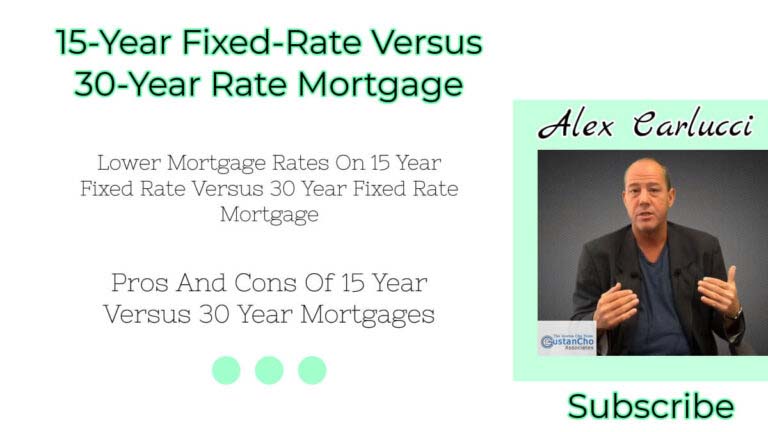Fixed-Rate Versus Adjustable-Rate Mortgage on Home Loans
In this blog, we will cover and discuss fixed-rate versus adjustable-rate mortgage. For a first-time homebuyer or even a seasoned veteran home buyer, applying for a home loan can be a very stressful process. Homebuyers will most likely have a lot of questions not just for their realtors but for their loan officers. Most consumers may have gone through a total of half a dozen mortgage application processes in their lifetime if that. Most do not remember the last time they went through the mortgage process.
Changes in Lending Guidelines and Volatility on Rates

Even if it has been a few years ago, there have been many changes in lending guidelines. The majority of licensed loan originators only know a fraction of the rules and regulations in mortgage lending. Depending on the buyer’s goal, there are differences that may or may not benefit in choosing a fixed-rate versus adjustable-rate mortgage. With fixed-rate versus adjustable-rate mortgage, ARMs normally have lower rates than fixed-rate mortgages. In this article, we will discuss and cover Fixed-Rate Versus Adjustable-Rate Mortgage On Home Loans.
Benefits On ARMs Versus Fixed Rate Mortgages
One of the major factors borrowers should consider is whether to get a fixed-rate mortgage versus an adjustable-rate mortgage, commonly referred to as an ARM. Sometimes an adjustable-rate mortgage may be better for borrowers. Depends on goals on how long home buyers intend on living at a new home purchase. Also depends on how low borrowers’ credit scores are. Borrowers with lower credit scores may want to refinance at a later date so an adjustable-rate mortgage may be more of a benefit. Borrowers with higher debt to income ratios may benefit from going with a 7/1 ARM
Adjustable-Rate Mortgages
For first-time buyers who intend on buying a starter home and intend on moving after 5 to 10 years, an adjustable-rate mortgage may be a better option for them. For example, many first-time homebuyers may purchase a condominium unit or small town home as their first home. They may intend on buying a larger home once they get married. Married couples who intend to have children in the future may want to upgrade to a larger single-family home. In situations like these, an adjustable-rate mortgage may be a better fit for them. Adjustable-rate mortgages have lower interest rates during the fixed-rate period. It then adjusts after the fixed-rate period is over. Can change depending on the index the adjustable-rate mortgage is based on. Adjustable-rate mortgages are 30 year amortized term loans.
Types Of ARMs
The most common adjustable-rate mortgage is:
- 5/1 ARM where the mortgage rate is fixed for the first five years of the 30-year loan program and adjusts every year for the remaining 30 year period
- The adjustment rate is the index plus the margin
The margin is a fixed-rate and the index changes depending on the index such as the following:
- CMT
- Libor
- COFI, or other indexes the lender bases the ARM
There are caps on adjustable-rate mortgages. In the event the index skyrockets, there is a cap where the rate cannot exceed. The loan originator can explain how the fixed-rate period, the adjustment rates, and the caps work.
Fixed-Rate Versus Adjustable-Rate Mortgage
With Fixed-Rate Mortgages, interest rates will remain the same for the 30-year term of the mortgage loan. Fixed-rate mortgage loans offer security and stability to homeowners. Homeowners are assured because mortgage principal and interest will never change during the 30-year term of their mortgage loan. Property taxes and homeowners insurance can change and increase over a period of time. However, the principal and interest will remain the same for the term of the 30-year term of the mortgage loan.
Fixed-Rate Versus ARMs With High DTI

With adjustable-rate mortgages, there is the qualifying rate and the note rate. ARMs generally have lower mortgage rates than fixed-rate mortgages. With 5/1 ARMs, lenders use the qualifying rate. With 7/1 Adjustable Rate Mortgages, lenders will use the note rate. How qualifying mortgage rates works is lenders take the note rate and add a margin of normally 2% and the sum of the note rate plus the margin is the qualifying rate.
Case Study
Let’s use a case study:
- 5/1 ARM Note Rate 4.0%
- 7/1 ARM Note Rate 4.125%
- 30 Year Fixed Rate Mortgage 5.0%
- Margin For Qualifying Rate 2.0%
- For borrowers that choose a 5/1 ARM, the mortgage underwriter will take the 4.0% note rate and add a 2% margin so the qualifying rate will be 6.0% when qualifying debt to income ratios
- However, if the borrower chooses the 7/1 ARM at 4.125%, with 7/1 ARMs, lenders will just use the note rate to calculate housing payment
- Therefore, it is best to choose 7/1 Adjustable-Rate Mortgages when qualifying borrowers who exceed the maximum debt to income ratio caps
Benefits of Fixed-Rate Versus Adjustable-Rate Mortgage
There are options on mortgage loan programs when you apply for a mortgage loan. There are pros and cons on a fixed rate versus ARM depending on how long you intend in living on your new home purchase. ARM stands for adjustable rate mortgage. It is more geared towards first-time homebuyers who are planning on purchasing starter homes and do not plan on purchasing another home or refinancing in the near future. For homebuyers who plan on buying a long home and plan on staying on their home purchase for seven or more years, a fixed rate mortgage may be a better option. This is because a fixed-rate mortgage has fixed mortgage rates for the term of the loan a borrower chooses. Both fixed-rate mortgages and adjustable-rate mortgages have their pros and cons. Homebuyers need to think about the variables in their life and goals as homeowners before the home buyer commits to choosing a fixed rate versus ARM. In this blog, we will discuss Fixed-Rate Versus ARM Comparisons on Home Purchase and Refinance.
Basics of Adjustable-Rate Mortgages
Adjustable Rate Mortgages benefit homebuyers who do not plan on living in the home they purchase for longer than 10 years. Adjustable rate mortgages offer lower mortgage rates initially for a certain period of time and the rates adjust thereafter. For example, if a home buyer chooses a 5/1 ARM, the home buyer will get a fixed rate the first five years of the mortgage. The rate will adjust the sixth year and every year thereafter until the end of the term of the mortgage loan. The adjusted rate after the fixed rate period will be based on an index and margin.
How Are Adjustable-Rate Mortgages Work
The index will adjust but the margin will stay the same. The lender will decide which index the adjustable mortgage rate will be based on. Examples of indexes are the Constant Maturity Treasuries (CMT), LIBOR, COFI, etc. The margin will be a fixed rate throughout the term of the mortgage loan. For example, a lender may set the margin at 3.0% for a 30-year adjustable rate mortgage and that margin will be 3.0% throughout the term of the 30-year adjustable rate loan. There are caps on adjustable-rate mortgages which will be set by the adjustable-rate mortgage lender.
Fixed-Rate Versus Adjustable-Rate Mortgage Comparisons For Borrowers

Fixed rate mortgages are different than ARM in a way that once you get a mortgage rate and lock that mortgage rate, that rate will remain the same for the term of the mortgage loan. If you pick a 30-year fixed-rate mortgage loan, your mortgage rate will stay the same for the 30-year term of the mortgage loan. One of the major benefits of a fixed rate mortgage is that you will know that your principal and interest payments will be the same for the course of the term of your mortgage loan. With an adjustable-rate mortgage, your payments may change during the adjustment period.
Benefits On ARM Versus Fixed Rate Mortgages
One of the major benefits on adjustable rate mortgages over fixed-rate mortgages is that mortgage rates are generally lower on adjustable rate mortgages than they are on fixed-rate mortgages. When a borrower exceeds the debt to income ratio caps, one of the options or solutions to solve the higher debt to income ratios is to change the mortgage loan program to an adjustable rate mortgage from a fixed rate mortgage. This is due to the lower mortgage rates the ARM has to offer over the fixed-rate mortgage. For more information about the contents of this blog, please contact us at Non-QM Mortgage Lenders at 800-900-8569 or text us for a faster response. Or email us at gcho@gustancho.com. The team at Non-QM Mortgage Lenders is available 7 days a week, on evenings, weekends, and holidays.






